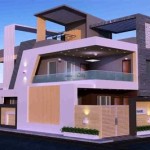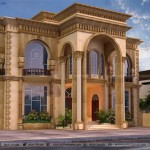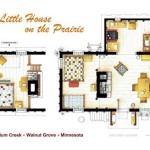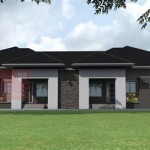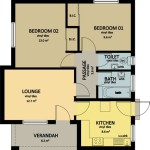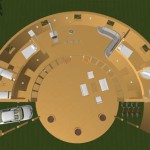House Plans Under 300 Square Meters: Designing Efficient and Stylish Homes
The demand for smaller, more efficient homes is on the rise. Building a house under 300 square meters offers a balance between comfortable living and manageable costs. This size range allows for diverse architectural styles and layouts while minimizing land usage and resource consumption. Careful planning is key to maximizing space and creating a functional, aesthetically pleasing home within this footprint.
One of the first considerations when designing a house under 300 square meters is the lifestyle and needs of the occupants. Families, couples, and individuals will have different spatial requirements. A detailed needs assessment helps determine the necessary number of bedrooms, bathrooms, and common areas. This assessment also informs decisions about the inclusion of specialized spaces like home offices, gyms, or hobby rooms.
Choosing the right architectural style is crucial. A single-story design offers accessibility and ease of movement, particularly suitable for families with young children or elderly members. However, a multi-story design can maximize the use of a smaller plot of land by stacking vertical space. Popular styles for smaller homes include minimalist, contemporary, and traditional designs, each offering unique aesthetic and functional advantages.
Open-plan living has become a popular trend in modern home design, and it's particularly well-suited to houses under 300 square meters. By combining the living, dining, and kitchen areas into a single, flowing space, the perception of size is enhanced. This layout also promotes social interaction and creates a brighter, more airy atmosphere. Strategic placement of furniture and partitions can delineate zones within the open plan while maintaining a sense of spaciousness.
Maximizing natural light is essential in smaller homes. Large windows and strategically placed skylights can flood the interior with natural illumination, reducing the need for artificial lighting and creating a more welcoming environment. Consider the orientation of the house to optimize solar gain and minimize heat loss, contributing to energy efficiency.
Outdoor spaces, while often overlooked, can significantly enhance the perceived living area of a smaller house. A well-designed patio, deck, or balcony can function as an extension of the indoor living space, providing an area for relaxation, dining, and entertainment. Careful landscaping can further enhance the outdoor area, creating a private oasis and blurring the lines between indoor and outdoor living.
Storage solutions are critical in smaller homes. Incorporating built-in wardrobes, under-stair storage, and cleverly designed shelving can maximize space utilization and minimize clutter. Multi-functional furniture, such as sofa beds or ottomans with hidden storage, can also contribute to an organized and efficient living environment.
Sustainable design principles should be considered when planning a house under 300 square meters. Energy-efficient appliances, insulation, and windows can minimize energy consumption and reduce utility costs. Rainwater harvesting systems and solar panels can further contribute to the home's sustainability and reduce its environmental impact.
Working with a qualified architect is highly recommended when designing a house under 300 square meters. An architect can help translate your vision into a functional and aesthetically pleasing design, ensuring that the space is optimized for your specific needs and lifestyle. They can also navigate local building codes and regulations, ensuring a smooth construction process.
Choosing the right materials is also crucial. Durable, low-maintenance materials are a wise investment, minimizing long-term maintenance costs. Consider the local climate and choose materials that are resistant to the elements and require minimal upkeep. Balancing aesthetic appeal with practicality is key when selecting materials for both the interior and exterior of the home.
Budgeting is paramount throughout the design and construction process. A detailed budget should be established early on, outlining the costs of materials, labor, and permits. Working within a predetermined budget ensures that the project remains financially viable and avoids unexpected expenses. Regular monitoring of expenses is crucial to stay on track and make informed decisions throughout the building process.
Flexibility is essential during the design and construction phases. Unforeseen challenges may arise, requiring adjustments to the original plan. Maintaining a flexible approach allows for adaptation to these challenges while minimizing disruptions to the overall project timeline and budget.

10 House Design You Can Built In Less Than 300 Sq M Lot Square Floor Plans Blueprints

Four Bedroom Modern House Design Pinoy Eplans Home Plans Bungalow

Modern Contemporary House Design With 4 Bedrooms Cool Concepts

10 House Design You Can Built In Less Than 300 Sq M Lot Blueprints Outside

10 Beautiful Homes Under 300 Square Meters With Plans Homify

House Design 4 Bedroom 2 Y 300sqm Exterior Interior Animation

House Plans For You 300 Square Meters

Modern Contemporary House Design With 4 Bedrooms Cool Concepts
Modern House Design 18 00m X 16 80m With 3 Bedroom Engineering Discoveries

10 House Design You Can Built In Less Than 300 Sq M Lot Minimalist Two Story Blueprints

